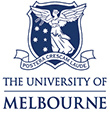Sulfoglycolysis sustains Eubacterium rectale in low-fiber diets
Authors:
- Sharma, Mahima
- Pudlo, Nicholas
- Järvå, Michael A.
- Kaur, Arashdeep
- John, Alan
- Burchill, Laura
- Lingford, James P.
- Epa, Ruwan
- Abayakoon, Palika
- Scott, Nichollas E.
- Turkenburg, Johan P.
- Davies, Gideon J.
- Martens, Eric C.
- Goddard-Borger, Ethan D.
- Williams, Spencer J.
Details:
Journal of Biological Chemistry, Volume 301, Issue 3, 2025-03-31
Article Link: Click here
The production of short-chain fatty acids (SCFAs) by Firmicutes (Bacillota) within the human gastrointestinal tract is recognized as critical for gut health and the progression of a range of disease states. Firmicutes are the most diverse phylum of human gut bacteria, are highly studied, and are often specialized to degrade just a few polysaccharide substrates. Members of the Firmicutes include key bacteria that produce butyrate, an SCFA that is generally not produced by members of the other major phyla. Recently, it was shown that Eubacterium rectale, a widespread member of the Firmicutes belonging to the Clostridiales cluster XIVa, can grow on the unusual but ubiquitous plant-derived sugar SQ using a sulfoglycolytic sulfofructose transaldolase pathway. Here, we show that in addition to SQ, E. rectale can also grow on the SQ glycoside sulfoquinovosyl glycerol (SQGro). The 3D structure of the E. rectale sulfoquinovosidase (SftG) shares strong structural conservation with other carbohydrate-active enzyme family GH31 SQases. Using sequence-similarity networks, we provide new biological context to a conserved domain of unknown function protein SftX belonging to DUF4867, which is conserved in the sulfoglycolytic sulfofructose transaldolase pathway, and determine its 3D structure. Finally, with the aid of a synthetic mini-human microbiome reconstituted in germ-free mice, we show that an SQ dietary supplement can rescue E. rectale from population crashes that occur upon switching from a high-fiber to a low-fiber, high-fat diet. This suggests that SQ or SQGro has the potential as a prebiotic for promoting the maintenance of this important butyrate-producing bacterium within the colonic microbiota.


